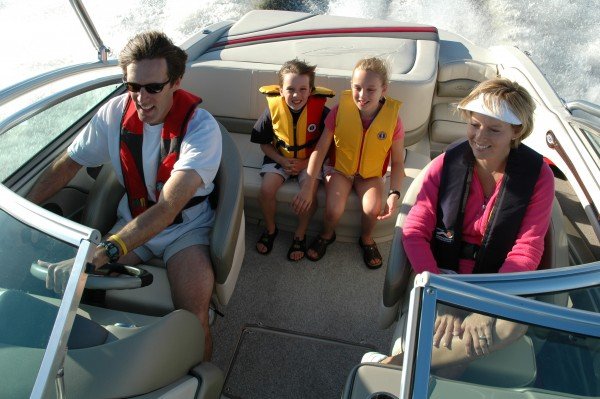With the start of summer signaled by Memorial Day Weekend, boaters and water sports enthusiasts will be taking to the oceans and lakes soon is greater numbers.
The week preceding Memorial Day is named Safe Boating Week by the National Boating Safety Council. This year the focus is on wearing life jackets with May 20 as “international wear your life jacket to work day.” (Numbers unavailable for how many people actually did that, however.)
RELATED: 6 Ways to Brush Up on Boater Safety
Throughout the year, the non-profit group has focused its campaign on the message “Wear It!,” urging boaters to always wear their life jackets even in calm conditions. They also remind boaters to not operate their vessels under intoxicants and to obey navigational signs.
As some find out the hard way, many boaters are not as familiar with safety precautions as they should be, especially on the west coast where boaters do not require a license or certification test. Here is a 10-point pre-departure check list from West Marine that can come in handy whenever you leave the dock.
RELATED: 10 Questions to Ask When Buying a Life Jacket
Check weather report
It’s always a good idea to check the weather report before you leave, even days in advance. For one thing, you want to have an enjoyable trip and for another, you don’t want to get caught in a storm.
File a float plan
Like anything else, you want to tell someone where you are going. Leave a message with an emergency contact including where you plan on going and your expected time of return.
Check bilge and bilge pumps
Ensure that your bilge pump is dry of water and oil. If it’s dirty, determine where the substance is coming from. Make sure your bilge pump is working properly in case of emergency.
Verify safety equipment and spare parts
Make sure you have a working VHF radio (preferably two), GPS, flairs, air horn, engine replacement filters, lubricating oil and belts.
RELATED: 7 Things to Remember Prepping Your Boat for Spring
Check engine levels
Before each trip, check the oil, fuel and coolant levels and fill as needed.
Identify non-swimmers
Once your crew arrives, it’s a good idea to survey the bunch. Find out who cannot swim and make them wear a life jacket.
Choose a first mate
Next find out who is the most skilled and make him or her the first mate. Feel free to order this person around.
Acquaint the crew with safety devices
Point out to the crew where such things as life jackets and fire extinguishers are located. Let them know where they are free to move about the boat and how to operate the head and water pumps.
Prepare for engine start
If you’re operating a gasoline engine, always run the blower before hitting the ignition to ensure the hold is without any fumes. On a diesel engine, run the glow plugs for 30 seconds before starting.
Free the boat of dock lines and shore power
Be sure to release the boat of the dock lines and the shore power cord. You would be surprised how many times people forget this step. Kind of like driving away from the gas station with the filling pump still attached to your car.
From here, nothing but the open seas and adventure awaits.
Photo credit: US Coast Guard








